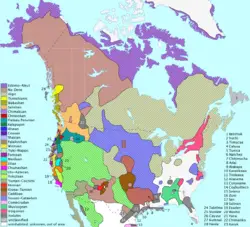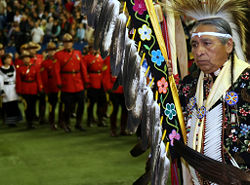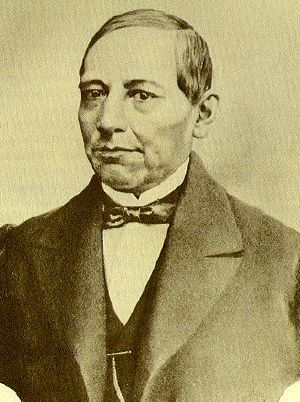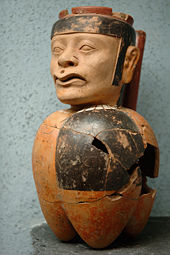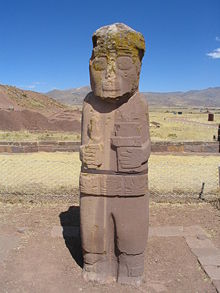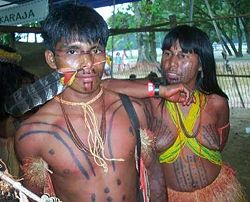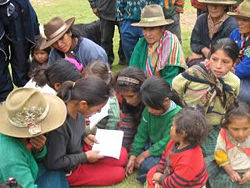- This article is about the indigenous inhabitants of the Americas. For details of those inhabitants of the United States of America, see Native Americans in the United States.
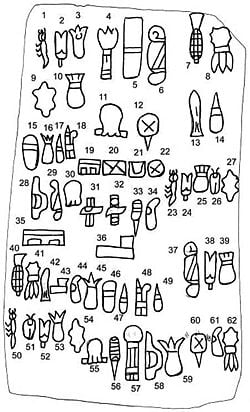
The indigenous peoples of the Americas are the pre-Columbian inhabitants of the Americas, their descendants, and many ethnic groups who identify with those peoples. They are often also referred to as "Native Americans" or "American Indians," although such terms are also commonly applied to those tribes who inhabit what is now the United States.
The word "Indian" was an invention of Christopher Columbus, who erroneously thought that he had arrived in the East Indies. The misnomer remains, and has served to imagine a kind of racial or cultural unity for the autochthonous peoples of the Americas.[2] The unitary idea of "Indians" was not one shared by most indigenous peoples, who saw themselves as diverse. But the "Indian" gave Europeans a fixed person who could be labeled (as "primitive" or "heathen," for example), given a legal designation, and classified. Thus, the word "Indian" gave Europeans a valuable tool for colonization. Today, many native peoples have proudly embraced an imagined spiritual, ethnic, or cultural unity of "Indians."
Some indigenous peoples of the Americas supported agriculturally advanced societies for thousands of years. In some regions they created large sedentary chiefdom polities, and had advanced state level societies with monumental architecture and large-scale, organized cities. The impact of their agricultural endowment to the world is a testament to their time and work in reshaping, taming and cultivating the flora and fauna indigenous to the Americas.[3]
History
According to the New World migration model, a migration of humans from Eurasia to the Americas took place via Beringia, a land bridge which formerly connected the two continents across what is now the Bering Strait. The minimum time depth by which this migration had taken place is confirmed at circa 12,000 years ago, with the upper bound (or earliest period) remaining a matter of some unresolved contention.[4] These early Paleoamericans soon spread throughout the Americas, diversifying into many hundreds of culturally distinct nations and tribes.[5] The time frame and exact routes are still matters of debate, and the model faces continuous challenges. (It should be noted that this theory stands in direct contrast to the oral histories of many of the indigenous peoples of the Americas, who believe they have been living there since their genesis, described by a wide range of traditional creation myths.
One result of these waves of migration is that large groups of peoples with similar languages and perhaps physical characteristics as well, moved into various geographic areas of North, and then Central and South America. While these peoples have traditionally remained primarily loyal to their individual tribes, ethnologists have variously sought to group the myriad of tribes into larger entities which reflect common geographic origins, linguistic similarities, and lifestyles.
Remnants of a human settlement in Monte Verde, Chile dated to 12,500 years ago (another layer at Monteverde has been tentatively dated to 33,000-35,000 years ago) suggests that southern Chile was settled by peoples who entered the Americas before the peoples associated with the Bering Strait migrations. It is suggested that a coastal route via canoes could have allowed rapid migration into the Americas. The traditional view of a relatively recent migration has also been challenged by older findings of human remains in South America; some dating to perhaps even 30,000 years old or more. Some recent finds (notably the Luzia skeleton in Lagoa Santa, Brazil) are claimed to be morphologically distinct from Asians and are more similar to African and Australian Aborigines. These American Aborigines would have been later displaced or absorbed by the Siberian immigrants. The distinctive Fuegian natives of Tierra del Fuego, the southernmost tip of the American continent, are speculated to be partial remnants of those Aboriginal populations. These early immigrants would have either crossed the ocean by boat or traveled north along the Asian coast and entered America through the Northwest, well before the Siberian waves. This theory is presently viewed by many scholars as conjecture, as many areas along the proposed routes now lie underwater, making research difficult.
Scholars' estimates of the total population of the Americas before European contact vary enormously, from a low of 10 million to a high of 112 million.[3] Whatever the figure, scholars generally agree that most of the indigenous population resided in Mesoamerica and South America, while about 10 percent resided in North America.[6]
European colonization
The European colonization of the Americas forever changed the lives, bloodlines, and cultures of the peoples of the continent. Their populations were ravaged by disease, by the privations of displacement, and in many cases by warfare with European groups that may have tried to enslave them. The first indigenous group encountered by Columbus were the 250,000 Tainos of Hispaniola who were the dominant culture in the Greater Antilles and the Bahamas. Whoever was not killed by the widespread diseases brought in from Europe or the many conflicts against European soldiers were enslaved, and the culture was extinct by 1650. Only 500 had survived by the year 1550, though the bloodlines continued through the modern populace. In Amazonia, indigenous societies weathered centuries of unforgiving colonial affronts[7]
The Spaniards and other Europeans brought horses to the Americas. Some of these animals escaped and began to breed and increase their numbers in the wild. Interestingly, the horse had originally evolved in the Americas, but the last American horses (species Equus scotti and others died out at the end of the last ice age with other megafauna.[8] The suggestion that these extinctions, contemporary with a general late Pleistocene extinction throughout the globe, was due to over-hunting by native Americans is fairly unlikely, given the overwhelming evidence for some type of natural catastrophe as the culprit. The re-introduction of the horse had a profound impact on Native American culture in the Great Plains of North America and of Patagonia in South America. This new mode of travel made it possible for some tribes to greatly expand their territories, exchange many goods with neighboring tribes, and more easily capture game.
Europeans also brought diseases against which the indigenous peoples of the Americas had no immunity. Chicken pox and measles, though common and rarely life-threatening among Europeans, often proved fatal to the indigenous people, and more dangerous diseases such as smallpox were especially deadly to indigenous populations. Smallpox, typhus, influenza, diphtheria, measles, malaria, and other epidemics swept in after European contact, felling a large portion of the indigenous peoples of the Americas, causing one of the greater calamities in human history, comparable only to the Black Death.[3] In North America alone, at least 93 waves of epidemic disease swept through native populations between first contact and the early twentieth century.[9] Another reason for the dramatic decline of the Native American population were the continuing wars with either Europeans or between feuding indigenous communities. More recently, collective mobilization among the indigenous peoples in the Americas has required the incorporation of closely-knit local communities into a broader national and international framework of political action.
Agricultural endowment
Over the course of thousands of years, a large array of plant species were domesticated, bred and cultivated by the indigenous peoples of the American continent. This American agricultural endowment to the world now constitutes more than half of all crops grown worldwide [10]. In certain cases, the indigenous peoples developed entirely new species and strains through artificial selection, as was the case in the domestication and breeding of maize from wild teosinte grasses in the valleys of southern Mexico. Maize alone now accounts in gross tonnage for the majority of all grain produced world-wide.[10] A great number of these agricultural products still retain native names (Nahuatl and others) in the English and Spanish lexicons.
Some indigenous American agricultural products that are now produced and/or used globally include:
- Maize (corn), (domesticated from teosinte grasses in southern Mexico starting 12,000 years ago; maize, squash and beans form the indigenous triumvirate crop system known as the "three sisters")
- Squash (pumpkins, zucchini, marrow, acorn squash, butternut squash, others)
- Pinto bean (Frijol pinto) ("painted/speckled" bean; nitrogen-fixer traditionally planted in conjunction with other "two sisters" to help condition soil; runners grew on maize; beans in the genus Phaseolus including most common beans, tepary beans and lima beans were also all first domesticated and cultivated by indigenous peoples in the Americas)
- Tomato
- Potato
- Avocado
- Peanuts
- Cacao* beans (used to make chocolate)
- Vanilla
- Strawberry (various cultivars; modern Garden strawberry was created by crossing sweet North American variety with plump South American variety)
- Pineapple (cultivated extensively)
- Peppers (species and varieties of Capsicum, including bell peppers, jalapeños, paprika, chili peppers, now used in world-wide cuisines.)
- Sunflower seeds (under cultivation in Mexico and Peru for thousands of years; also source of essential oils)
- Rubber (used indigenously for making bouncing balls, foot-molded rubber shoes, and other assorted items)
- Chicle (also known as chewing gum)
- Cotton (cultivation of different species independently started in both the Americas and in India)
- Tobacco (ceremonial entheogen; leaves smoked in pipes)
- Coca (leaves chewed for energy and medicinal uses)
(* Asterisk indicates a common English or Spanish word derived from an indigenous word)
Culture
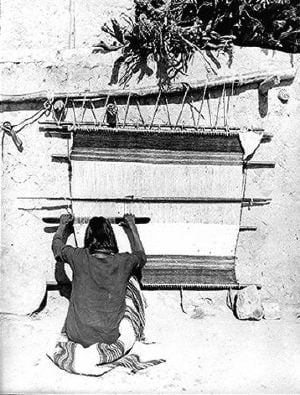
No single cultural trait can be said to be unifying or definitive for all of the peoples of the Americas. Spanning all climate zones and most technological levels, several thousand distinct cultural patterns have existed among the peoples of the Americas. Cultural practices in the Americas seem to have been mostly shared within geographical zones where otherwise unrelated peoples might adopt similar technologies and social organizations. An example of such a cultural area could be Mesoamerica, where millennia of coexistence and shared development between the peoples of the region produced a fairly homogeneous culture with complex agricultural and social patterns. Another well-known example could be the North American Great Plains area, where until the nineteenth century, several different peoples shared traits of nomadic hunter-gatherers primarily based on buffalo hunting. Within the Americas, dozens of larger and hundreds of smaller culture areas can be identified.
Religion
There was never one universal Native American religion or spiritual system. Native American spirituality includes a number of stories and legends, including creation myths, that are mythological. Many Native American cultures have shamans—traditional healers, ritualists, singers, mystics, lore-keepers and both "Medicine Men" and "Medicine Women"—although none of them used the term "shaman" to describe these religious leaders. Rather, their spiritual functionaries are described by words in their own languages, and in many cases are not taught to outsiders.
Many would describe their religious practices as a form of spirituality, rather than religion, although in practice these terms may sometimes be used interchangeably. Common spirituality focused on the maintenance of a harmonious relationship with the spirit world, and often consisted of worshiping several lesser spirits and one great creator. This was often achieved by ceremonial acts, usually incorporating sandpainting. The colors—made from sand, charcoal, cornmeal, and pollen—depicted specific spirits. These vivid, intricate, and colorful sand creations were erased at the end of the ceremony.
As the European settlers advanced through the Americas, they brought Christianity with them. Catholicism was brought by missionaries, particularly in South America and also in the American Southwest by the Spaniards and in Quebec by the French. Other areas of North America were influenced by Protestants. Thus, a number of contemporary Native American beliefs reflect Christian influence on indigenous beliefs.
Music and art
Native American music in North America is almost entirely monophonic, but there are notable exceptions. Traditional Native American music often includes drumming but little other instrumentation, although flutes are played by individuals. The tuning of these flutes is not precise and depends on the length of the wood used and the hand span of the intended player, but the finger holes are most often around a whole step apart and, at least in Northern California, a flute was not used if it turned out to have an interval close to a half step.
Music from indigenous peoples of Central Mexico and Central America often was pentatonic. Before the arrival of the Spaniards it was inseparable from religious festivities and included a large variety of percussion and wind instruments such as drums, flutes, sea snail shells (used as a kind of trumpet) and "rain" tubes. No remnants of pre-Columbian stringed instruments were found until archaeologists discovered a jar in Guatemala, attributed to the Maya of the Late Classic Era (600-900 C.E.), which depicts a stringed musical instrument which has since been reproduced. This instrument is astonishing in at least two respects. First, it is the only stringed instrument known in the Americas prior to the introduction of European musical instruments. Second, when played, it produces a sound virtually identical to a jaguar's growl.
Arts and crafts of the indigenous peoples of the Americas comprises a major category in the world art collection. Contributions include pottery, paintings, jewelery, weavings, sculptures, basketry, carvings, and hair pipes.
North America
The vastly diverse geography of North America is reflected in the diversity among its Native population. From the Inuits of the Northern, sub-Arctic and Arctic regions to the desert and plains tribes and the legendary Mayan Civilization in the tropical forest areas of Mexico, North America has as many differing Native cultures as any other region.
Canada
There are many different ethnic and cultural groups that made up the original inhabitants of Canada. There are the Inuit and Métis, distinct to Canadian geography, and other groups such as the Huron, Algonquin, and Iroquois whose range compromised both Canada and the future U.S. In fact, many of the Canadian Natives share more in common with United States Natives than they do from those of Central and South America. The Canadian natives were mostly nomadic, living in small bands and subsisting off of hunting and gathering style industries.[11] The first contact with the Europeans was disastrous for the natives. Explorers and traders brought European diseases, such as smallpox, which killed the populations of entire villages. Relations varied between the settlers and the Natives. The French befriended several Algonquin nations, including the Huron peoples and nations of the Wabanaki Confederacy, and entered into a mutually beneficial trading relationship with them. The Iroquois, however, became dedicated opponents of the French and warfare between the two was unrelenting, especially as the British armed the Iroquois in an effort to weaken the French.[11]
The most commonly preferred term for the indigenous peoples of what is now Canada is Aboriginal peoples. Of these Aboriginal peoples who are not Inuit or Métis, "First Nations" is the most commonly preferred term of self-identification. First Nations peoples make up approximately 3 percent of the Canadian population; Inuit, Métis and First Nations together make up 5 percent. The official term for First Nations people—that is, the term used by both the Indian Act, which regulates benefits received by members of First Nations, and the Indian Register, which defines who is a member of a First Nation—is Indian.
The Royal Commission on Aboriginal Peoples was an important commission undertaken by the Government of Canada in the 1990s. It assessed past government policies towards Aboriginal peoples, such as residential schools, and provided many policy recommendations to the government.[12]
Mexico
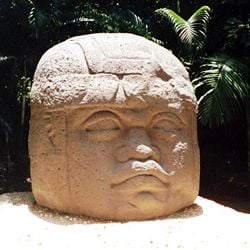
The territory of modern-day Mexico was home to numerous indigenous civilizations prior to the arrival of the European conquistadores: The Olmecs, who flourished from between 1200 B.C.E. to about 400 B.C.E. in the coastal regions of the Gulf of Mexico; the Zapotecs and the Mixtecs, who held sway in the mountains of Oaxaca and the Isthmus of Tehuantepec; the Maya in the Yucatán (and into neighboring areas of contemporary Central America); the Purepecha or Tarascan in present day Michoacán and surrounding areas, and the Aztecs, who, from their central capital at Tenochtitlan, dominated much of the centre and south of the country (and the non-Aztec inhabitants of those areas) when Hernán Cortés first landed at Veracruz.[13]
In contrast to what was the general rule in the rest of North America, the history of the colony of New Spain was one of racial intermingling (mestizaje).[13] Mestizos quickly came to account for a majority of the colony's population; however, significant pockets of pure-blood indígenas (as the native peoples are now known) have survived to the present day. With mestizos numbering some 60 percent of the modern population, estimates for the numbers of unmixed indigenous peoples vary from a very modest 10 percent to a more liberal 30 percent of the population. The reason for this discrepancy may be the Mexican government's policy of using linguistic, rather than racial, criteria as the basis of classification.
In the states of Chiapas and Oaxaca and in the interior of the Yucatán peninsula the majority of the population is indigenous. Large indigenous minorities, including Nahuas, Purépechas, and Mixtecs are also present in the central regions of Mexico. In Northern Mexico indigenous people are a small minority: they are practically absent from the northeast but, in the northwest and central borderlands, include the Tarahumara of Chihuahua and the Yaquis and Seri of Sonora. Many of the tribes from this region are also recognized Native American tribes from the U.S. Southwest such as the Yaqui and Kickapoo.
While Mexicans are universally proud of their indigenous heritage, modern-day indigenous Mexicans are still the target of discrimination and outright racism.[14] In particular, in areas such as Chiapas—most famously, but also in Oaxaca, Puebla, Guerrero, and other remote mountainous parts—indigenous communities have been left on the margins of national development for the past 500 years. Indigenous customs and uses enjoy no official status.
United States
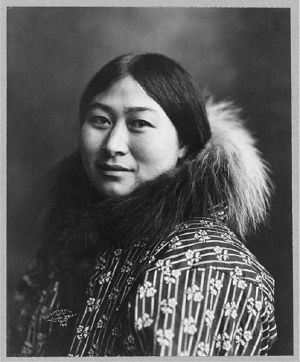
The Natives of what is now the united States of America are a large group of differing bands and tribes, some differing in extremes. Most were nomadic bands that subsisted on hunting and gathering techniques. Their technology was not as advanced as some of the civilizations in South America, but nonetheless they were able to thrive for thousands of years in America. All that changed when European colonists arrived on the East Coast. There were periods of mutual cooperation among both groups, but friendly exchanges did not last long. As European colonists started to expand their territory into previously indigenous areas, violence erupted. After the American Revolutionary War, the indigenous peoples found themselves at the mercy of a government and people that now saw the American lands as their own. Native tribes were continuously pushed farther and farther inland.
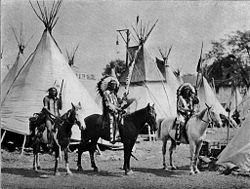
In the mid and late nineteenth century, the explicit policy of Indian Removal forced or coerced the relocation of major Native American groups in both the Southeast and the Northeast United States, resulting directly and indirectly in the deaths of tens of thousands. The subsequent process of assimilations was no less devastating to Native American peoples. Tribes were generally located to reservations on which they could more easily be separated from traditional life and pushed into European-American society. Some Southern states additionally enacted laws in the nineteenth century forbidding non-Indian settlement on Indian lands, intending to prevent sympathetic white missionaries from aiding the scattered Indian resistance.
At the end of the twentieth century, there were 561 federally recognized tribal governments in the United States. These tribes possess the right to form their own government, to enforce laws (both civil and criminal), to tax, to establish membership, to license and regulate activities, to zone and to exclude persons from tribal territories. Limitations on tribal powers of self-government include the same limitations applicable to states; for example, neither tribes nor states have the power to make war, engage in foreign relations, or coin money (this includes paper currency).[15]
According to 2003 United States Census Bureau estimates, a little over one third of the 2,786,652 Native Americans in the United States live in three states: California at 413,382, Arizona at 294,137 and Oklahoma at 279,559.[16]
Central America
Central America is home to many tribes, from coastal Natives who lived off the sea, to those who inhabited the dense jungles. The nearby Caribbean was also home to numerous tribes, such as the Taino and the Carib who gave their name to the area.
Belize
Amerindians which led way to the Mayans were amongst the original inhabitants of Belize. The Maya civilization spread itself over Belize between 1500 B.C.E. and 300 C.E. and flourished until about 900 C.E.[17] European settlement began with British Jews, privateers and shipwrecked English seamen as early as 1638. From that time on the country was continuously fought over by both European, and later the American, governments for its richness in raw, natural resources. This led to an establishment of an English style government and exploitation of both the country and natives.
Today, Mestizos (European with indigenous peoples) number about 45 percent of the population; unmixed Maya make up another 6.5 percent. The Garifuna, who came to Belize in the 1800s, originating from Saint Vincent and the Grenadines, with a mixed African, Carib, and Arawak ancestry, take up another 5 percent of the population.
Guatemala
Many of the indigenous peoples of Guatemala are of Maya heritage. Other groups are Xinca people and Garífuna.
Pure Maya account for some 40 percent of the population; although around 40 percent of the population speaks an indigenous language, those tongues (of which there are more than 20) enjoy no official status.
Nicaragua
The Miskito are Native American people in Central America. Their territory expands from Cape Cameron, Honduras, to Rio Grande, Nicaragua along the Miskito Coast. There is a native Miskito language, but large groups speak Miskito creole English, Spanish, Rama and others. The creole English came about through frequent contact with the British. Many are Christians.
Over the centuries the Miskito have intermarried with escaped slaves who have sought refuge in Miskito communities. Traditional Miskito society was highly structured, with a defined political structure. There was a king but he did not have total power. Instead, the power was split between him, a governor, a general, and by the 1750s, an admiral. Historical information on kings is often obscured by the fact that many of the kings were semi-mythical.
South America
The Natives of South America constructed vast empires, with impressive engineering accomplishments, but there were also many small tribes that lived in the plateaus, highlands and valleys.
Argentina
The first signs of human presence in Argentina are located in the Patagonia (Piedra Museo, Santa Cruz), and date from 11,000 B.C.E.[18] Around 1 C.E., several maize-based civilizations developed in the Andean region (Santa María, Huarpes, Diaguitas, Sanavirones, among others). In 1480, the Inca Empire under the rule of emperor Pachacutec launched an offensive and conquered present-day northwestern Argentina, integrating it into a region called Collasuyu. In the northeastern area, the Guaraní developed a culture based on yuca and sweet potato. The central and southern areas (Pampas and Patagonia) were dominated by nomadic cultures, unified in the seventeenth century by the Mapuches.[18]
European explorers arrived in 1516. Spain established a permanent colony on the site of Buenos Aires in 1580; the Viceroyalty of the Río de la Plata was created in 1776. During the early part of this period it was largely a country of Spanish immigrants and their descendants, known as creoles, some of them gathered in the Buenos Aires and other cities, others living on the pampas as gauchos. Indigenous peoples inhabited much of the rest of Argentina.[18] As the country eventually modernized and industrialized, the natives who subsisted off more agrarian endeavors found themselves in a state of decline. The emergence of a European centered government that either ignored or mistreated the natives did not help the situation, and their numbers dwindled to about nine percent of the total population, which is the level that they compromise currently. Argentina's Indigenous nations include the Toba, Wichí, Mocoví, Pilagá, Chulupí, Diaguita-Calchaquí, Kolla, Guaraní (Tupí Guaraní and Avá Guaraní in the provinces of Jujuy and Salta, and Mbyá Guaraní in the province of Misiones), Chorote, Chané, Tapieté, Mapuche, Tehuelche and Selknam (Ona).
Bolivia
Beginning about the second century B.C.E., the Tiwanakan culture developed at the southern end of Lake Titicaca. This culture, centered around and named for the great city of Tiwanaku, developed advanced architectural and agricultural techniques before it disappeared around 1200 C.E., probably because of extended drought. Roughly contemporaneous with the Tiwanakan culture, the Moxos in the eastern lowlands and the Mollos north of present-day La Paz, Bolivia also developed advanced agricultural societies that had dissipated by the thirteenth century.
The collapse of Tiwanakan influence resulted in the rise of seven regional kingdoms of the Aymara, the most powerful states located in the densely populated area around Lake Titicaca. The Aymara, a belligerent people who lived in fortified hilltop towns, had an extraordinary ability to adapt to the unique climatic conditions of the region and increased their food supply through irrigation and the process of freezing and drying crops. The Aymara completely dominated the Uru, another major ethnic group in the pre-Columbian southern Andes. Although the Uru might have preceded the Aymara in the region, by the twelfth century they were poor fishermen and landless workers. The Aymara, however, were not able to contain the expansion of the Quechua, the third major ethnic group. After the collapse of the Tiahuanacan Empire, a Quechua-speaking state emerged in the area around Cuzco became known as the Incas when they adopted the name of their rulers, were the most powerful group in the northern highlands. As the Aymara kingdoms in the south became weaker in the second half of the fifteenth century, the Incas began to conquer them.[19]
The arrival of the Spanish in the fifteenth century marked the downfall of the Inca empire, which was quickly defeated by the Spanish military led by Pizarro and their indigenous allies. However, civil unrest and violent opposition to Spanish rule continued for decades after, as nearly all the different ethnic groups resisted colonization.[19] In the end, it was only small bands in the Eastern plains that not even the Incas had been able to conquer who remained semi-free from colonial rule, which can be seen in the fact that currently there are about 2.5 million people who speak Quechua, 2.1 million speak Aymara, while Guaraní is only spoken by a few hundred thousand people. The languages are recognized; nevertheless, there are no official documents written in the languages, and prejudice has existed against those who do not speak Spanish, the official language of the country. However, the constitutional reform in 1997 for the first time recognized Bolivia as a multilingual, pluri-ethnic society and introduced education reform. In 2005, for the first time in the country's history, an indigenous Aymara president, Evo Morales, was elected.
Brazil
Fossil records found in Minas Gerais show evidence that the area now called Brazil has been inhabited for at least 8,000 years by indigenous populations.[20] The Andes and the mountain ranges of northern South America created a rather sharp cultural boundary between the settled agrarian civilizations of the west coast (which gave rise to urbanized city-states and the immense Inca Empire) and the semi-nomadic tribes of the east, who never developed written records or permanent monumental architecture. For this reason, very little is known about the history of Brazil before 1500. Archaeological remains (mainly pottery) indicate a complex pattern of regional cultural developments, internal migrations, and occasional large state-like federations.
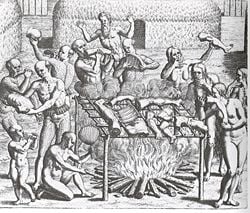
By the time the first European explorers arrived, all parts of the territory were inhabited by semi-nomadic Indian tribes, who subsisted on a combination of hunting, fishing, gathering, and agriculture. The population density was rather low, however; total numbers have been estimated at one million people (but recent archaeological discoveries, such as those mentioned above, seem to indicate a much higher number). Although many Brazilian Indians succumbed to massacres, diseases, and the hardships of slavery and displacement, many were absorbed into the Brazilian population. The Portuguese colonists, all males, started to have children with female natives, creating a new generation of mixed-race people who spoke Indian languages (in the city of São Paulo in the first years after her foundation, a Tupi language called Nheengatu). The children of these Portuguese men and Indian women formed the majority of the population. Groups of fierce conquistadores' sons organized expeditions called "bandeiras" (flags) into the backlands to claim the land to the Portuguese crown and to look for gold and precious stones.[20] The waning indigenous population could not provide sufficient labor for the intensive European agriculture of sugar cane and other crops so the Portuguese had to start importing black slaves from Africa. A few tribes were able to survive in remote areas, and today some still subsist in their pre-discovery lifestyle in remote corners of the Amazon rainforest.
In the twentieth century, the Brazilian Government adopted a more humanitarian attitude and offered official protection to the indigenous people, including the establishment of the first Indian reserves. The National Indian Service (today the FUNAI, or Fundação Nacional do Índio) was established by Cândido Rondon, a Bororo Indian himself and a military officer of the Brazilian Army. The remaining unacculturated tribes have been contacted by FUNAI, and accommodated within Brazilian society in varying degrees. However, the exploration of rubber and other Amazonic natural resources led to a new cycle of invasion, expulsion, massacres and death, which continues to this day.
Colombia
A small minority today within Colombia's overwhelmingly Mestizo and Afro-Colombian population, Colombia's indigenous peoples nonetheless encompass at least 85 distinct cultures and more than 1,378,884 people[21]. A variety of collective rights for indigenous peoples are recognized in the 1991 Constitution.
One of these is the Muisca culture, a subset of the larger Chibcha ethnic group, famous for their use of gold, which led to the legend of El Dorado. At the time of the Spanish conquest, the Chibchas were the largest native civilization between the Incas and the Aztecs.
The two main linguistic groups that dominated the territory now known as Colombia during the pre-Colombian period were the Carib and the Chibcha. They possessed different organizational structures and distinct languages and cultures. In upper Magdalene region, from the fifth to eighth centuries, many tumuli with sculptures were raised in San Agustin. The region now occupied by the city of Bogotá was inhabited by the Muisca. The Muisca based their social organization on trade. They exchanged salt, emeralds, beans, maize and other crops with other Chibchan tribes such as the Chitareros, Guanes, and Laches.
Peru
Most Peruvians are either indigenous or mestizos (of mixed Indigenous, African, European and Asian ancestry). Peru has the largest indigenous population of South America, and its traditions and customs have shaped the way Peruvians live and see themselves today. Throughout the Peruvian Amazon, indigenous peoples have long faced centuries of missionization, unregulated streams of colonists, land-grabbing, decades of formal schooling in an alien tongue, pressures to conform to a foreign national culture, and more recently, explosive expressions of violent social conflict fueled by a booming underground coca economy. The disruptions accompanying the establishment of extractive economies, coupled with the Peruvian state-sanctioned civilizing project, have led to a devastating impoverishment of Amazonia's richly variegated social and ecological communities.[22]
The most visited tourist destinations of Peru were built by indigenous peoples (the Quechuas, Aymara, Moche, etc.), while Amazonian peoples, such as the Urarina, Bora, Matsés, Ticuna, Yagua, Shipibo and the Aguaruna, developed elaborate shamanic systems of belief prior to the European Conquest of the New World. Macchu Picchu is considered one of the marvels of humanity, and it was constructed by the Inca civilization. Even though Peru officially declares its multi-ethnic character and recognizes at least six–dozen languages—including Quechua, Aymara and hegemonic Spanish—discrimination and language endangerment continue to challenge the indigenous peoples in Peru.[23]
Notes
- ↑ Joel Skidmore, 2006, 1-4. The numbers appearing next to each glyph are identifiers used by archaeologists investigating the find.
- ↑ Indian The American Heritage® Dictionary of the English Language, Fourth Edition. Retrieved November 28, 2007.
- ↑ 3.0 3.1 3.2 Charles C. Mann, 1491: New Revelations of the Americas Before Columbus. (Knopf Publishing Group, 2005, ISBN 140004006X)
- ↑ James Q. Jacobs, "THE PALEOAMERICANS:Issues and Evidence Relating to the Peopling of the New World" Retrieved November 28, 2007.
- ↑ James Q. Jacobs, "PALEOAMERICAN ORIGINS:A Review of Hypotheses and Evidence Relating to the Origins of the First Americans" Retrieved November 28, 2007.
- ↑ Alan Taylor, American colonies (New York: Viking, 2001, ISBN 0670872822).
- ↑ Stefano Varese, Salt of the Mountain: Campa Asháninka History and Resistance in the Peruvian Jungle, Susan Giersbach Rascón (trans.), (University of Oklahoma Press, 2004, ISBN 0806135123).
- ↑ Thomas Jefferson Fossil Collection "Ancient Horse (Equus cf. E. complicates)" The Academy of Natural Sciences. Retrieved November 28, 2007.
- ↑ "Native Americans of North America" Microsoft® Encarta® Online Encyclopedia 2007 Microsoft Corporation. Retrieved January 22, 2008.
- ↑ 10.0 10.1 "Native Americans: The First Farmers" AgExporter (1999).
- ↑ 11.0 11.1 Olive Patricia Dickason, A Concise History of Canada's First Nations (Oxford University Press, 2006. ISBN 0195424158).
- ↑ Library of Parliament, "The Report of the Royal Commission on Aboriginal Peoples" Retrieved November 30, 2007.
- ↑ 13.0 13.1 T. R. Fehrenbach, Fire and Blood: A History of Mexico. (New York, NY: Da Capo Press, 1995, ISBN 0306806282).
- ↑ David L. Frye, Indians into Mexicans: History and Identity in a Mexican Town (University of Texas Press, 1996, ISBN 0292724969).
- ↑ Tribes by State AAANativeArts.com. Retrieved November 22, 2011.
- ↑ Annual Estimates by Race Alone US Census.gov.
- ↑ "Maya Archaeological Sites in Belize" Casado Internet Group, Belize (2007). Retrieved November 30, 2007.
- ↑ 18.0 18.1 18.2 Daniel K. Lewis, The History of Argentina (Palgrave Macmillan, 2003, ISBN 1403962545).
- ↑ 19.0 19.1 Terence N. D'Altroy, The Incas (Wiley-Blackwell, 2003, ISBN 1405116765).
- ↑ 20.0 20.1 Boris Fausto, Arthur Brakel (Trans.) A Concise History of Brazil (Cambridge University Press, 1999, ISBN 0521563321)
- ↑ DANE 2005 national census
- ↑ Bartholomew Dean and and Jerome M. Levi,(Eds.), At the Risk of Being Heard: Identity, Indigenous Rights, and Postcolonial States (Ann Arbor, MI: University of Michigan Press, 2003, ISBN 0472097369)
- ↑ Bartholomew Dean, (book review). Stefano Varese, Salt of the Mountain: Campa Asháninka History and Resistance in the Peruvian Jungle. The Americas 62(3) (January 2006): 464–466.
ReferencesISBN links support NWE through referral fees
- Churchill, Ward. A Little Matter of Genocide. City Lights Books, 1997. ISBN 0872863239
- D'Altroy, Terence N. The Incas. Wiley-Blackwell, 2003. ISBN 1405116765
- Dean, Bartholomew and Jerome M. Levi, (Eds.). At the Risk of Being Heard: Identity, Indigenous Rights, and Postcolonial States. Ann Arbor, MI: University of Michigan Press, 2003. ISBN 0472097369
- Dean, Bartholomew. "State Power and Indigenous Peoples in Peruvian Amazonia: A Lost Decade, 1990-2000," 199–238 in The Politics of Ethnicity Indigenous Peoples in Latin American States. (David Rockefeller Center Series on Latin American Studies) David Maybury-Lewis, Ed. Cambridge< MA: Harvard University Press, 2003. ISBN 0674009649
- Dean, Bartholomew. "Salt of the Mountain: Campa Asháninka History and Resistance in the Peruvian Jungle." (book review) The Americas 62(3) (2006 January): 464–466. issn=0003-1615
- Dean, Bartholomew and Jerome M. Levi (Eds.). At the Risk of Being Heard; Identity, Indigenous Rights, and Postcolonial States. Ann Arbor, MI: University of Michigan Press, 2003. ISBN 0472097369
- Dickason, Olive Patricia. A Concise History of Canada's First Nations. Oxford University Press, 2006. ISBN 0195424158
- Fausto, Boris, and Arthur Brakel (Trans.) A Concise History of Brazil. Cambridge University Press, 1999. ISBN 0521563321
- Fehrenbach, T. R. Fire and Blood: A History of Mexico. (original 1973) reprint New York, NY: Da Capo Press, 1995. ISBN 0306806282
- Frye, David L. Indians into Mexicans: History and Identity in a Mexican Town. University of Texas Press, 1996. ISBN 0292724969
- Jacobs, James Q. The Paleoamericans: Issues and Evidence Relating to the Peopling of the New World Anthropology and Archaeology Pages, 2001. Retrieved November 25, 2011.
- Jacobs, James Q. Paleoamerican Origins: A Review of Hypotheses and Evidence Relating to the Origins of the First Americans. Anthropology and Archaeology Pages, 2002. Retrieved November 25, 2011.
- Jones, Peter N. Respect for the Ancestors: American Indian Cultural Affiliation in the American West. Boulder, CO: Bauu Press, 2005. ISBN 0972134921
- Kane, Katie. "Nits Make Lice: Drogheda, Sand Creek, and the Poetics of Colonial Extermination." Cultural Critique 42 (1999): 81–103 issn 0882-4371 doi=10.2307/1354592
- Krech, Shepard III. The Ecological Indian: Myth and History. New York, NY: W.W. Norton, 1999. ISBN 0393047555
- Lewis, Daniel K. The History of Argentina. Palgrave Macmillan, 2003. ISBN 1403962545
- Mann, Charles C. 1491: New Revelations of the Americas Before Columbus. New York, NY: Knopf Publishing Group, 2005. ISBN 140004006X
- Skidmore, Joel. "The Cascajal Block: The Earliest Precolumbian Writing," Mesoweb Reports & News (2006). Retrieved November 25, 2011.
- Taylor, Alan. American colonies. New York, NY: Viking, 2001. ISBN 0670872822
- Thornton, Bruce S. New World, Old Myths: A review of Charles C. Mann's "1491: New Revelations of the Americas Before Columbus" Claremont Review of Books (July 2, 2006). Retrieved November 25, 2011.
- Varese, Stefano. Salt of the Mountain: Campa Asháninka History and Resistance in the Peruvian Jungle. Susan Giersbach Rascón, (trans.) Norman, OK: University of Oklahoma Press, 2004. ISBN 0806135123
External links
All links retrieved March 2, 2018.
- Indian Archaeology of Long Island
- The Peopling of the American Continents
- Alaska Natives and Native Americans Online
- Uncontacted Indian Tribe Found in Brazilian Amazon
- A History of the Native People of Canada
Credits
New World Encyclopedia writers and editors rewrote and completed the Wikipedia article in accordance with New World Encyclopedia standards. This article abides by terms of the Creative Commons CC-by-sa 3.0 License (CC-by-sa), which may be used and disseminated with proper attribution. Credit is due under the terms of this license that can reference both the New World Encyclopedia contributors and the selfless volunteer contributors of the Wikimedia Foundation. To cite this article click here for a list of acceptable citing formats.The history of earlier contributions by wikipedians is accessible to researchers here:
The history of this article since it was imported to New World Encyclopedia:
Note: Some restrictions may apply to use of individual images which are separately licensed.
